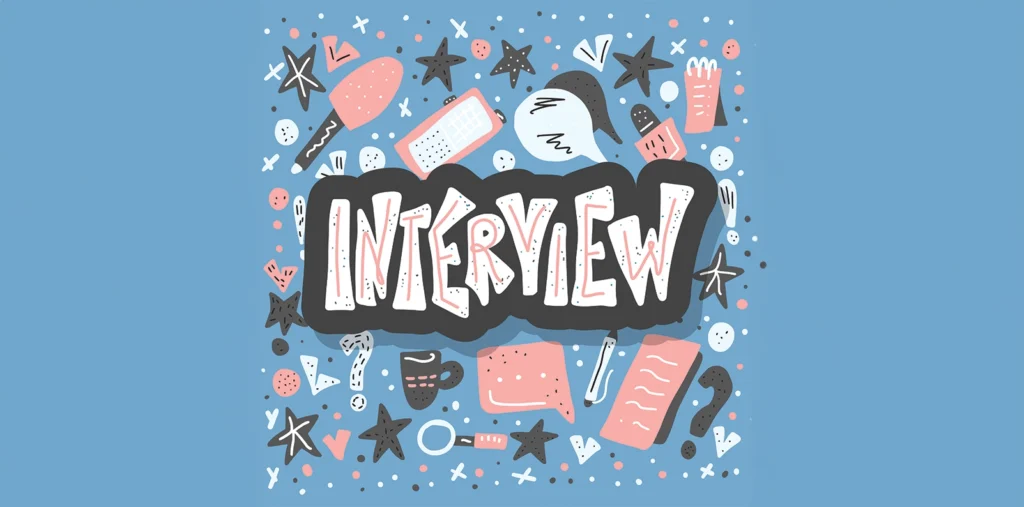Exploring the Creative World of a Multifaceted Artist
Ania Danylo discusses her theatre background, transition to children’s literature, and the interplay between her roles as director, educator, and writer, highlighting her passion for storytelling and creative collaboration.
Ania Danylo is a multifaceted talent whose contributions to the world of theatre and literature have left an indelible mark. With over 25 years of experience as an actor, director, writer, and instructor, Ania has brought to life a diverse array of productions, from the poignant “The Diary of Anne Frank” to the timeless enchantment of Shakespeare’s “A Midsummer Night’s Dream.” Her directorial prowess extends to a variety of Shakespearean plays and other classics, showcasing her ability to navigate complex narratives and bring out the best in her cast and crew. Ania’s dedication to the arts is further exemplified by her role as an educator, where she has inspired countless students to achieve their own successes, many of whom have gone on to win awards for their performances.
Ania’s foray into children’s literature is a testament to her storytelling prowess. Her books, “The Elephant’s Christmas Wish” and “Zolemina: The Should Do, Could Do, Would Do Cat,” are delightful rhyming tales that capture the imagination of young readers. These works reflect her deep understanding of narrative structure, character development, and emotional resonance; skills honed through her extensive theatre background. Ania’s ability to weave engaging stories for children is reminiscent of the whimsical charm found in the works of Shel Silverstein and Jack Prelutsky, yet uniquely her own. Her books not only entertain but also offer coloring book versions, inviting children to interact with the stories in a creative and personal way. Ania Danylo’s contributions to both theatre and literature continue to inspire and captivate audiences of all ages.
With over 20 years of experience in theatre, including directing plays like The Diary of Anne Frank and Shakespeare’s works, how has your background in theatre influenced your approach to writing children’s books like The Elephant’s Christmas Wish?
Engaging in directing and acting in the theatre is all about the art of storytelling. Shakespeare was a genius at it. Understanding how to build tension, create conflicts, and craft satisfying resolutions is essential for creating compelling narratives in children’s picture books. It also involves mastering character development, pacing, rhythm and timing, language and imagery, emotional resonance, and themes. But I am also influenced by Shel Silverstein and Jack Prelutsky as much as I am by Shakespeare, Tennessee Williams, or Edward Albee. Directing also fosters attention to detail and the ability to see the big picture. Theatre, being a very visual and auditory medium, strongly connects with children’s picture books.
When I initially wrote “The Elephant’s Christmas Wish” as a poem, I envisioned it as a TV animation special rather than a book. I took it to a pitchfest many years ago and found a producer that would produce it if I could find a network to air it. Amazingly, I found a network to air it at the same pitchfest, but they wanted me to turn it into a 1-hour special or a 2-hour movie. At the time, I didn’t know how to do that. But I am confident I could do it now.
It really wasn’t until I read the poem to one of my adult acting students who said to me, “Why am I not reading this as a book to my grandkids at Christmas?” I thought, “Oh, I can make this a children’s picture book.” And so I did.
You’ve worked as both an acting instructor and a director for various theatre companies, including Storybook Theatre in Calgary. How do you balance the roles of educator, director, and writer, and how do these different aspects of your career inform each other?
As someone who’s passionate about storytelling in all its forms, I’ve been fortunate to have had the opportunity to wear multiple hats in the world of theatre and writing. Balancing the roles of educator, director, and writer can be challenging, but I’ve found that each aspect informs and enriches the others in wonderful ways.
Your children’s book, The Elephant’s Christmas Wish, tells a story of perseverance and following one’s dreams. What inspired you to write this story, and how do the themes of the book reflect your own experiences in the arts?
I have always been a firm believer in following dreams. It is hard to work in the arts if you don’t believe in that. I also really liked elephants. In the past, I wrote a lot of interactive children’s plays, which I produced and toured around Calgary and western Canada. Many of them were Christmas stories, which also held themes of following dreams and inclusion. When I got tired of touring and carrying my sets on my back with my small group of actors that I had assembled, I guess I had another Christmas story in me.
I also think part of the story came from one Christmas performance that we did in a local community where the audience was extremely diversified ethnically. I had been asked to drop all of the “Christmas” references for that performance, which I thought was very odd based on the name of the play and the time of year.
When we arrived, I asked the person in charge if they really wanted us to lose Santa, the Elves, and all “Christmas” references. She looked horrified and said,Heck no, this is a Christmas party.” It struck me funny that someone had assumed, because of their ethnicity, that the audience didn’t want to celebrate Christmas at a, well, Christmas party. I have come across that a few times over the years. So, it struck me one day that an elephant might want to be part of Christmas too.
When I’m working on a project, I often find myself drawing on skills from each of these roles. For example, when writing a picture book, I might think like a director, imagining how the story would be staged or visualized. As an educator, I consider how the story can be used to teach or inspire young readers.
In terms of specific tips for balancing these roles, I’ve found it essential to prioritize my time, set clear goals, and be flexible. Some days, I’ll focus on teaching or directing, while others are dedicated to writing. By allowing myself to oscillate between these roles, I’ve found that each one enriches the others, and I’m able to bring a unique perspective to each project.
You’ve also moved into the world of film and television, working on independent productions, commercials, and TV shows. What challenges did you face transitioning from theatre to screen, and how have these experiences shaped your creative process?
Transitioning from theatre to screen has had a few challenges as well as insights along the way.
I like to explain the fundamental differences most simply, as theatre is like talking into a megaphone (everything expands out) and film is like turning the megaphone backwards (everything contracts in). Film, by the very nature of the medium, is vastly more visual and less dependent on the spoken word. A great deal can be conveyed on the screen with the smallest of gestures, the twitch of a lip, or a glimpse of an eye. For the actor of film, the eyes are by far the most important, both in what they show in the spirit, soul, and emotions of the character and also in what they reflect in what the character sees.
In the world of theatre you are fully immersed in the story and life of the character for weeks and often months. When you perform, the audience is right there with you, becoming part of the performance and giving immediate feedback. There is an energy that passes between the performers and the audience, whether it be a traditional play, an interactive script, or even an improvisational performance; the audience is an intrinsic element. The storyline is front and center through the rehearsals, and the performance is always beginning, middle, and end.
Film is very fragmented. The story is broken down into individual shots and scenes. While there may be numerous takes of the shots, the rehearsal process is not the same at all as in theatre. The team is much larger, with numerous crew members. The actor needs to quickly focus on the immediate scene, which is probably being shot well out of sequence of the storyline, as films are shot with the idea of keeping the costs as low as possible. Also, there is no energy between actors and audience since the audience comes much later. While the actors and directors in films need to be story-focused as well. It really seems to me that the story itself becomes strongly defined by the editor, which is one of the most critical roles in filmmaking.
As a certified hypnotherapist and an experienced acting coach, you have a unique perspective on the mind and emotions. How do you incorporate these skills into your teaching and directing, and how do they help your students and actors achieve their best performances?
As a certified hypnotherapist and experienced acting coach, I’ve had the privilege of delving into the inner workings of the mind and emotions. I’ve discovered that these skills are invaluable in helping my students and actors access their full potential and deliver truly captivating performances. There are many tools, such as visualization, body mirroring, etc., that can be useful for producing great performances; however, the very best one is to “be specific.”
But truly the most important part of my teaching, coaching, and therapy is providing a very relaxed atmosphere coupled with a fair amount of humor. Providing a safe environment where actors feel comfortable to take risks, try out ideas, push the boundaries, and, yes, laughing brilliantly when things don’t quite work out, goes a very long way to building confidence. Confidence is key to a good actor, public speaker, and/or storyteller. I always tell my actors and students that the most important part of their job is to have fun. Having fun is contagious. I like to think all performances possess the power of passion and the fragrance and flavor of fun.
Your book features 56 illustrations by Remi Bryant. How did you collaborate with the illustrator to bring Felix the elephant and his journey to life visually, and what was the process like of turning your written story into a fully illustrated children’s book?
Remi was fantastic to work with. She not only did the illustrations but also mentored me in how to self-publish a book, which I knew nothing about. But I was a pain in the butt, you know? Before hiring Remi, I actually completed three iterations of my own version of the book, so I knew precisely what I wanted in terms of style. I therefore had some very strong thoughts right away, and she did a terrific job of collecting copious notes from me throughout. That is something that carried over very strongly with me from my years of directing. I can always see how to tweak something just a bit more to make it just a bit better. Without a doubt, I am sure I drove her more than a bit crazy. Plus, I was traveling through Bulgaria when we worked on a lot of the book, so the time differences were quite challenging. But she was fantastic to work with and learn from.
But given the high cost of printing, 56 full-color illustrations for a book is just absurd. When I began writing “Zolemina: The Should Do Could Do Would Do Cat,” my second children’s book, I started with it in mind. I did manage to get my page count down from 56 illustrations. But I was having
so much fun collaborating with my illustrator, David Griffiths, that I wasn’t able to stick to my goal of 32.Thus, I also converted both stories to coloring books. While black and white pages are more economical to print, coloring them inspires children’s innate desire for self-expression. The surprise was people were buying extra coloring books for their grandparents and elderly relatives.
EDITOR’S HIGHLIGHTS
Recommended reads for authors




